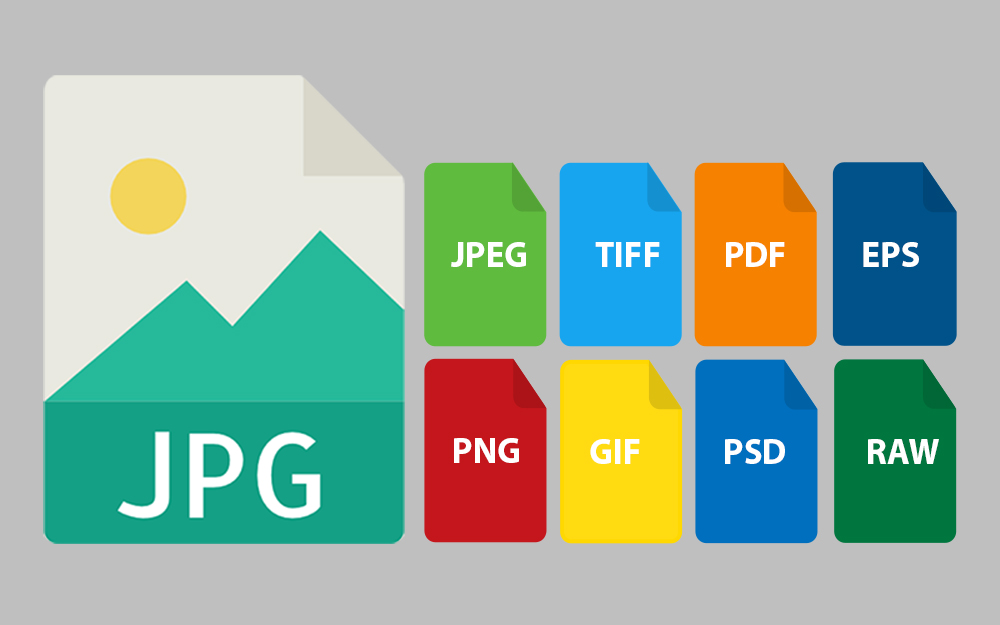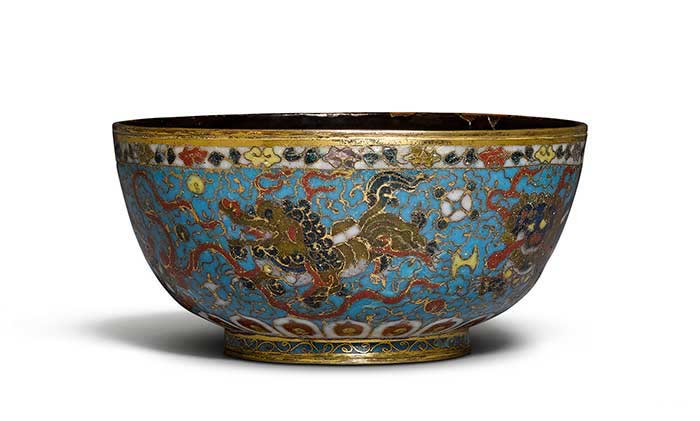With ever-emerging image technologies, certain changes have been noticed in the way from which we used to see and retouch images. JPG format being the main one, other file types such as JPEG, PNG, GIF, PDF etc. are commonly used and all of these serve different purposes for the file.
What you’ll learn in this article
Difference Between JPG and JPEG & Alongside Other File Formats
In the early days of the internet, all these formats gained popularity due to their simple and hassle-free compatibility with broadband speed internet, latest web browsers, and daily requirements of users.
To differentiate between all these image formats, we’ve covered necessary details of each of these and have identified their key strengths and weaknesses.
What is JPG file format?
JPG emerged as the primary format for watching photographs and images on different devices. JPG file format was developed by Joint Photographic Experts Group (JPEG).
The format function is quite similar to the ZIP file where the ZIP format identifies severances in different files for easily compressing data in the same way; JPG files can easily compress a lot of image data after minimizing sections of different images for blocks of “tiles” and pixels.
However, with JPG file compression you get the unwanted effect of permanent compression. The technology was developed to store large image files in little spaces without any image editing.

With great compression features, JPGs are now the gold standard of photography. A normal JPG image is compressible with a ratio of around 2:1 to a high of 100:1. Back when dial-up internet modem was used; JPG format was the only appropriate way of passing important image data.
However, because of the unique JPG nature, it would be considered as an ideal way of storing any art-related files. Even with the highest setting quality for JPG remains to be compressed, you would have a completely changed appearance for your images.
With some quality degradation faced with the JPG image format, the Joint Photographic Experts Group later on created lossless JPG technology for tackling this troublesome issue. However, at that timeless interest in higher picture quality and dial-up speeds never led to the improvement of the technology.
What is JPEG file format?
JPEG is one of the most common image formats ideals especially for lossy compression in digital images, particularly for images that are created by digital photography. The compression degree can easily get adjusted and allows you to get selectable tradeoffs between different storage sizes and image quality.
Typically JPEG can easily get a compression ratio of 10:1 with quite a little perceptible loss available in image quality. When the format was introduced in 1992, it quickly became the most widely used format for image compression.
Difference between JPG and JPEG
There are no major differences between JPG and JPEG images. It can be said that both these formats are used interchangeably. Thus, it’s better to get a brief look at similarities to get a better understanding of both.
- Both are raster image files.
- JPG and JPEG, both are short for Joint Photographic Experts Group.
- Both these formats are commonly used for image files.
- Both formats make use of lossy compression resulting in quality loss.
- Both formats support image format of smaller size.
- Both these formats have different extension names because older Windows versions weren’t able to support file extensions other than formats of three-letter.
What is GIF file format?
Quite similar to JPG, GIF is the older type of file and can generally be associated with the internet being opposed to the photography feature. GIF full form (Graphics Interchange Format) makes use of lossless compression technology usable in TIFF image format. The method once caught many controversies but later on gained acceptance.

By nature, the GIF file uses 8-bit color with limitation of 256 color palette that can easily get picked through RGB color and you can save it to “Color Table” or “Color Look-Up Table (CLUT)”. However, with GIF you get standard color palettes similar to “Web Safe” palette.
Difference between JPG and GIF
- While both these formats are usable in web, but you cannot use GIF for printed documents as due to its smaller size it would degrade its quality.
- Other major difference is that JPG uses lossy compression and a GIF image never loses data with lossless compression.
- With its low resolution, a GIF file can quickly upload and is ideal for line-art, simple animations and logos.
What is PNG file format?
PNG is short for Portable Network Graphics. The technology was developed while keeping it as a standard alternative for the GIF format that used exclusive LZW compression algorithm. PNG works well for internet graphics and it also led to transparency in browsers with the elegance that wasn’t possessed by GIF.

PNG format supports images of 8-bit color, similarly to 24-bit color such as RGB, just like JPG. But the difference between JPG and PNG is that PNG is of non-lossy in nature compared to JPG. With this format, you can compress photographic files without lowering the quality of your image.
Difference between JPG and PNG
- Amongst JPG, GIF and PNG, the PNG is the largest and isn’t supported by different browsers.
- Additionally, to be an excellent format for a image transparent background, non-lossy 24-bit PNG is quite ideal for the software of screenshot that helps in pixel for pixel reproduction of desktop environment.
What is RAW file format?
The file format is perhaps popular among professional photographers. These image formats are known as raw because these aren’t been processed and therefore their editing and printing aren’t possible. With different camera manufacturers, you get different proprietary raw image formats.
With raw images, users are allowed to edit a vast amount of image data that hasn’t been compressed. Due to this reason, files of raw format have an extremely large size and they typically get converted to TIFF before color-correction and editing.
Difference between JPG and RAW
- With RAW format you get better color shades compared to 8-bit JPEG image containing more than 16.8 million colors (256 tonal values for Red, Green and Blue channels0, whereas 12-bit RAW format image files contain more than 68.7 billion colors (4096 tonal values per color channel).
- You can step more than 14-bit RAW images while significantly increasing RGB tonal values to 16, 384 boosting the overall image prospect to more than 4.4 trillion color range.
- RAW images also contain a much wider dynamic range with the higher color gamut.
- RAW images utilize lossless compression technology.
What is TIFF file format?
By TIFF we mean Tagged Image File Format. Images with TIFF Photoshop file extension are of large file sizes. TIFF images remain uncompressed and also contain detailed image data (due to which the files are of quite large size).
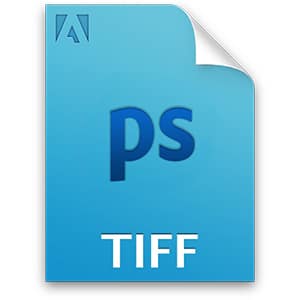
TIFF has emerged as one of the most common formats for use in software (like Photoshop), and other page layout programs (like InDesign and Quark),
Difference between JPG and TIFF
- TIFF stores much higher image data compared to JPG image format.
- TIFF file format can be categorized under the raster file formats. Being of a larger size, the image does not lose on quality and is ideal for “lossless compression,” whereas the JPG file utilizes lossy compression meaning that you lose on quality image data.
- TIFFs are quite flexible when comparing them in terms of color (they can be CMYK for printing purpose, grayscale, and RGB channel for internet). This means that a lot of maintenance is seen on original image data regardless of the ways through which you can re-save copy or compress the real file. Despite having a TIFF image, you get the ability for recovering the image quality after manipulation.
- The TIFF image format must be avoided on the internet as it might take a long time to load. The most common use of this file format is seen while saving photos for printing to get higher quality prints.
What is PSD file Format?
PSD file format can be created in Adobe Photoshop and can be saved. With PSD files you can easily edit images with the availability of different layers in the image. The Photoshop software helps in editing by generating raster files.
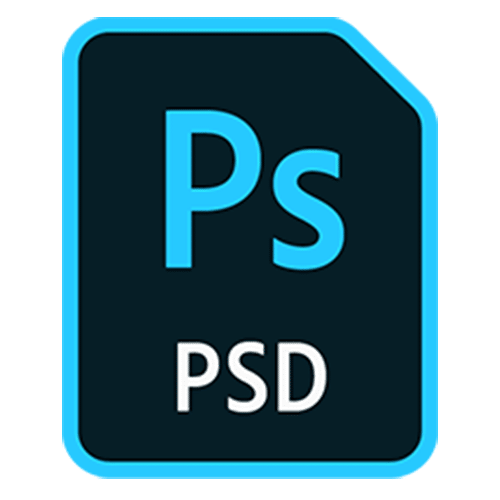
However, a little drawback of PSD to Photoshop is that it doesn’t work quite well with vector images compared to raster image formats.
Difference between JPG and PSD
- PSD is Photoshop document format while JPG is a standard image format
- A lot of applications support JPG files except PSD
- PSD files are edited with image layers but JPG doesn’t support layers
- Compared to JPG, PSD has higher image size
What is PDF file format?
The file format PDF (Portable Document Format) was created by Adobe Corporation to meet the objective of capturing and reviewing detailed and rich information with different applications and devices anywhere and with anyone. With popularity and day to day usage of this format, they’ve successfully met their goal.
In case you’ve saved a vector file in the PDF format, you’ll easily be able to view it without the requirement of any design and editing application (provided that you’ve installed the Adobe Acrobat Reader). With Acrobat software you can use the file for any further manipulations.
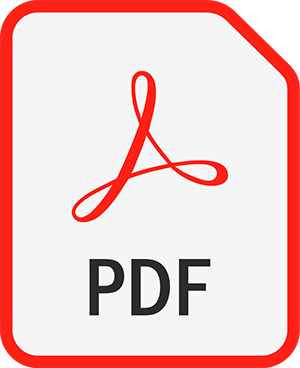
By far this can be said as the best universal tool ideal for sharing documents and files of different sizes.
Difference between JPG and PDF
- With PDF format, different document forms can be readable in a viewable manner. The JPG method is most commonly used for viewing images in lossy compression form.
- With PDF file the original layout of different documents are preserved but a lot of parts are left for open editing in the document. However, JPG compresses different image components or documents within a single file which is not dividable back to its original form.
- In PDF text can be selected and copied whereas the same isn’t possible in JPG files
- The PDF format is a document file whereas JPG is a graphic based image.
What is EPS file Format?
EPS is short for Encapsulated Postscript. EPS file is in vector format that is designed for producing graphics of high-resolution nature for printing purposes. EPS format is supported in almost all types of design and image editing software programs.

EPS Photoshop file extension can be assumed more like a universal file format (similar to PDF) which is used for opening vector-based artwork in different editors in addition to commonly used Adobe software. With this feature, designers can easily work on the file whether they’re using Adobe software or not. Other than Illustrator or Photoshop they might also work on Quark or Corel Draw.
Difference between JPG and EPS
- EPS is a vector file format where users can work with various curves, lines and shapes based on algebra like mathematical equations ideal for creating an image. JPG can be classified as a raster image, which is an image representation with lots of pixel type. It is simply just a snapshot of the original artwork.
- The vector image with EPS is ideal for different printing forms but with JPG users can get pixelation and reduced printed image as well.
Which is the best image format for the web?
Among all others, PNG is used for large image types or the bigger ones. These files sometimes contain images that you may find or not find useful. Another great option is the 8-bit PNG file, but for smaller file size it’s better to use GIF.
Neither of these can be considered as optimal photography choices as the standard JPG file format is smaller compared to lossless PNG while getting minimal loss in quality. Also for storing higher resolution files, JPG can be compressed without a little quality loss which can be noticed with a detailed inspection.

The main difference between JPG and PNG file format is that PNG is ideal for smaller files of non-loss nature with transparency. For files of larger space, this doesn’t work quite much as JPG, unless you’re demanding images of non-loss quality.
When you’re specifically looking for internet graphics then PNG file type is ideal for the purpose as it can easily support the image file in different browsers with the much-improved quality compared to JPG.
The non-loss nature of PNG files also makes them compatible with screenshot software that allows image reproduction of pixel to pixel under the desktop setting.
However, if you look professional photo editing and retouching of images without any loss of quality, you can use NEF file format for RAW images that are supported by Adobe Photoshop and other Adobe programs as well.
The image doesn’t get affected in any way even after making edits and resetting it to the default state. Other than that if you’re storing a pile of high-resolution images, you can save images in JPG format for compression.
GIF can mainly have originality to it and can perfectly be used for animation while producing little images of an 8-bit size.
Still, JPG is considered as the king format for all photo-like images and photographs. However, one must be cautious as with each saves, you’re degrading the image quality. The file format you’re about to choose would entirely depend on task-specific requirements.
